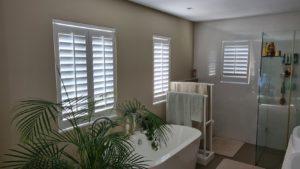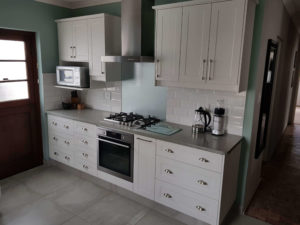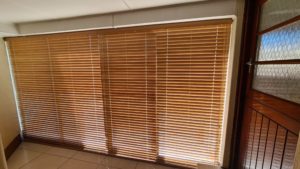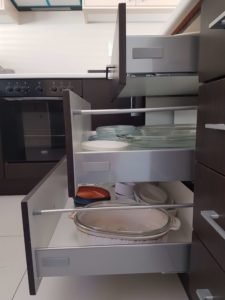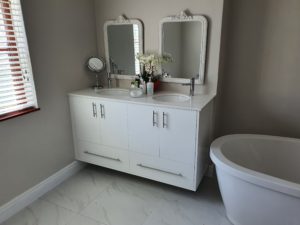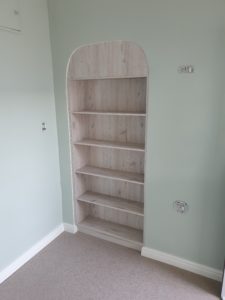As someone who is environmentally conscious, I am always looking for ways to reduce my carbon footprint. One area where I have found that I can make a significant impact is in my home’s energy efficiency. One simple change that can have a big impact is installing energy-efficient window blinds.
According to the Department of Energy, up to 30% of a home’s heating energy is lost through windows. In the summer, this can translate to higher cooling costs as sunlight enters through windows and heats up the interior. By installing energy-efficient window blinds, you can reduce the amount of heat that enters your home and keep your energy bills under control.
But what exactly are energy-efficient window blinds? How do they work, and what should you look for when shopping for them? In this article, I will explore everything you need to know about energy efficiency and window blinds, so you can make an informed decision about how to improve your home’s energy efficiency.
Why Energy Efficiency Matters
When it comes to energy usage in our homes, windows are a major culprit. In fact, windows are responsible for up to 30% of a home’s heating energy loss. But why does energy efficiency matter? As someone who cares about the environment and saving money on my energy bills, I know that energy efficiency is crucial for several reasons.
The Benefits of Energy Efficiency
First and foremost, energy efficiency helps to reduce our carbon footprint. By using less energy to heat and cool our homes, we can help to reduce greenhouse gas emissions and combat climate change. Additionally, energy-efficient homes are more comfortable to live in. By reducing drafts and keeping temperatures consistent, we can create a more pleasant living environment for ourselves and our families.
But it’s not just about the environment and our comfort. Energy efficiency can also save us money in the long run. By reducing our energy usage, we can lower our energy bills and put more money back into our pockets. And because energy-efficient homes are more attractive to buyers, they can also increase the resale value of our homes.
The Role of Window Blinds in Energy Efficiency
So, what role do window blinds play in energy efficiency? Window blinds can actually be a great tool for improving energy efficiency in our homes. By using the right type of blinds, we can reduce heat gain in the summer and heat loss in the winter.
For example, cellular shades are a popular option for energy-efficient window coverings. These shades are designed with a honeycomb-shaped cell that traps air, providing an extra layer of insulation for our windows. This can help to reduce heat loss in the winter and heat gain in the summer.
Another option is to use reflective blinds or shades. These are designed to reflect sunlight away from our windows, reducing heat gain in the summer. And because they can be adjusted to allow more or less light in, they can also help to control the amount of natural light in our homes, reducing the need for artificial lighting.
Overall, energy efficiency matters because it can help us to reduce our carbon footprint, save money on our energy bills, and create a more comfortable living environment. And by using the right type of window blinds, we can improve the energy efficiency of our homes and enjoy these benefits for years to come.
Types of Window Blinds
When it comes to window blinds, there are many different types to choose from. Each type has its own unique features and benefits. Here are a few of the most popular types of window blinds:
Venetian Blinds
Venetian blinds are a classic style of window blind that feature horizontal slats that can be tilted to control the amount of light that enters the room. These blinds are typically made from wood, aluminum, or PVC. Venetian blinds are a great choice for those who want a timeless look that will never go out of style.
Vertical Blinds
Vertical blinds are another popular type of window blind. These blinds feature vertical slats that can be opened and closed to control the amount of light that enters the room. Vertical blinds are often used for large windows or sliding glass doors. They are available in a wide range of materials, including fabric, vinyl, and aluminum.
Fabric Roller Blinds
Fabric roller blinds are a popular choice for those who want a softer, more elegant look. These blinds are made from a variety of fabrics, including cotton, linen, and polyester. They can be rolled up and down to control the amount of light that enters the room. Fabric roller blinds are a great choice for bedrooms, as they offer privacy and can help to block out light. Overall, there are many different types of window blinds to choose from. When selecting blinds for your home, consider factors such as style, material, and functionality. With so many options available, you’re sure to find the perfect blinds to suit your needs and style preferences.
Factors to Consider When Choosing Window Blinds
When it comes to choosing window blinds for energy efficiency, there are a few factors to consider. Here are some things that I took into account when choosing window blinds for my home:
Installation
One of the first things to consider is how the blinds will be installed. Inside mount blinds fit inside the window frame, while outside mount blinds are mounted above the window frame. Inside mount blinds can provide a cleaner look, but outside mount blinds can help block more light and provide better insulation. Make sure to measure your windows carefully to ensure a proper fit.
Material
The material of the blinds can also impact their energy efficiency. Cellular shades, also known as honeycomb shades, are a popular choice for energy efficiency because their design traps air, creating a layer of insulation. They come in single or double cell options, with double cell shades providing more insulation. Other options include roller shades, which can be made with energy-saving materials, and wood or faux wood blinds, which can provide insulation and light control.
Color
The color of the blinds can also impact their energy efficiency. Lighter colors reflect heat and can help keep a room cooler in the summer, while darker colors absorb heat and can help keep a room warmer in the winter. Consider the climate in your area and the direction your windows face when choosing a color.
Style
Finally, consider the style of the blinds. Different styles can provide different levels of light control and insulation. For example, vertical blinds are better suited for large windows or sliding glass doors, while Roman shades can provide a more elegant look. Think about your needs for privacy, light control, and insulation when choosing a style.
Installation and Maintenance
When it comes to installing energy-efficient window blinds, you have two options: DIY or professional installation. If you’re handy with tools and have experience with window treatments, you may want to consider installing the blinds yourself. However, if you’re unsure about your abilities or want to ensure that the installation is done correctly, it’s best to hire a professional.
DIY vs Professional Installation
If you decide to install the window blinds yourself, be sure to carefully read the manufacturer’s instructions and follow them closely. You’ll need to measure your windows accurately and purchase the correct size blinds. Additionally, you’ll need the necessary tools, such as a drill, screws, and a level.
Professional installation can save you time and ensure that the blinds are installed correctly. A professional installer will measure your windows and ensure that the blinds fit perfectly. They’ll also have the necessary tools and experience to complete the installation quickly and efficiently.
Cleaning and Maintenance Tips
Once your energy-efficient window blinds are installed, it’s important to keep them clean and well-maintained. Here are some tips:
- Regularly dust your blinds with a soft cloth or duster to prevent dirt and dust buildup.
- For a deeper clean, use a mild soap and water solution and a soft cloth to gently wipe down the blinds. Avoid using harsh chemicals or abrasive cleaners, as these can damage the blinds.
- Be sure to check the blinds regularly for any signs of wear or damage. If you notice any issues, such as broken slats or malfunctioning cords, contact a professional for repairs.
By following these tips and properly maintaining your energy-efficient window blinds, you can ensure that they last for years to come and continue to provide energy savings for your home.
Conclusion
After researching and learning about energy-efficient window coverings, I am excited to make some changes in my home. Not only will these changes help reduce my energy bills, but they will also make my home more comfortable year-round.
One of the most important things I learned is that not all window blinds are created equal. Some, like cellular shades and insulated curtains, are much more effective at reducing heat loss and gain than others. It’s important to do your research and choose the right window covering for your specific needs and budget.
Another key takeaway is that there are many factors that affect a window covering’s energy efficiency, including the material, color, and installation method. It’s important to consider all of these factors when choosing a window covering and installing it correctly to maximize its energy-saving potential.
Overall, I am excited to make these changes in my home and reap the benefits of energy-efficient window coverings. Not only will they help me save money on my energy bills, but they will also help reduce my carbon footprint and make my home more comfortable and cozy year-round.
FAQs
Here are some frequently asked questions about energy-efficient window blinds:
Q: How do energy-efficient window blinds work?
A: Energy-efficient window blinds work by blocking sunlight and heat from entering your home through your windows. They can also help to insulate your windows, preventing heat from escaping during the winter months.
Q: What types of energy-efficient window blinds are available?
A: There are several types of energy-efficient window blinds available, including cellular shades, roller shades, and Roman shades. Each type of shade has its own unique features and benefits, so it’s important to choose the right one for your home.
Q: How much energy can I save by using energy-efficient window blinds?
A: The amount of energy you can save by using energy-efficient window blinds will depend on a variety of factors, including the size and orientation of your windows, the type of blinds you choose, and your local climate. However, studies have shown that energy-efficient window blinds can help to reduce your heating and cooling costs by up to 25%.
Q: Are energy-efficient window blinds expensive?
A: The cost of energy-efficient window blinds will depend on the type of blinds you choose and the size of your windows. However, in general, energy-efficient window blinds are more expensive than traditional blinds. That said, the energy savings you can achieve with these blinds can help to offset the initial cost over time.
Q: Can I install energy-efficient window blinds myself?
A: In most cases, energy-efficient window blinds can be installed by a homeowner with basic DIY skills. However, if you’re not comfortable installing the blinds yourself, it’s always best to hire a professional to ensure that they are installed correctly.







